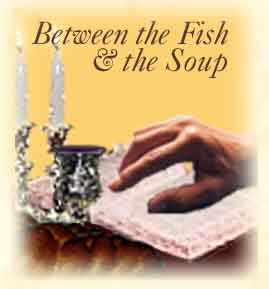

|
Aaron shall place his two hands on the living goat. He shall confess on it all the sins… of the Israelites. He shall place them (the sins) on the goat's head and send… (the goat) with a designated man to the desert. The goat shall carry all their sins to an uninhabited land… (17:21-2).
The Talmud records that the goat was dispatched to the Azazel (cliff from where it was pushed to its death) with every possible speed. A special raised ramp had to be placed to prevent the designated man being pushed the by the crowd who wanted the goat to reach the Azazel as soon as possible (Talmud - Yoma 66a). Once that journey had started, the people waited for signs that the goat had reached the Azazel and performed its destiny in effecting the kappara (atonement) for the Jewish people. The authorities in the Talmud vary as to how this news was communicated. One opinion holds that the news traveled through a system of flags waved from posts along the route from the Azazel back to the Temple. Another said that a scarlet thread in the Temple miraculously turned white to show that G-d had wiped clean previous records of sin. (Yoma 68b). Why was so much emphasis placed on speed? A suggestion. Klal Yisrael wanted to be at their spiritual peak at the time the kappara was effected. This is explained below. On Yom Kippur today, and all the more so in Temple times through the Avoda (Temple service special to Yom Kippur), people come close to G-d. The dominant theme of Yom Kippur is repentance - Teshuva, where a person literally returns to his Maker. On that day he emulates the Angels in many ways. He does this by abstaining from a whole range of activities that are specifically human, including working, eating and drinking. He brings himself close to G-d with his devotion in prayer: recognizing his past misdeeds and sincerely resolving to conduct himself better in the future. At that time he is as far away from the Evil Inclination as possible. Indeed, in coming close to the Almighty on Yom Kippur, we address Him in the same ways of the Angels: by saying Baruch Shem Kevod Malchuto aloud. As much as a person comes near to the Almighty on Yom Kippur, he does not always retain that closeness throughout the rest of the year. Even as the strain of the fast increases throughout the day, he might just turn his mind towards more mundane matters. However strong his will to improve, he may well doubt his ability to stick to his new resolutions throughout the year. Indeed the Tanna Hillel states that a person should not believe in himself until the day of his death (Avot 2:4). Throughout life the Yetzer Hara uses different and often increasingly subtle methods to entice a person to sin. As King David writes in this context: the wicked (Yetzer Hara) hunts for the righteous and seeks to kill him (Tehillim 37:32). This should explain the haste of effecting the kappara. Klal Yisrael wanted the atonement at that moment… when it would be most acceptable: at the peak of their spiritual 'high'. (This idea helped me to understand the following blessing I received from a relative - actually on the first night of Rosh Hashanah: "May the madriega [spiritual level] you succeed in reaching today be the same madreiga on which you stand the whole year round.")
This article is provided as part of Shema Yisrael Torah Network For information on subscriptions, archives, and http://www.shemayisrael.co.il Jerusalem, Israel 972-2-641-8801 |